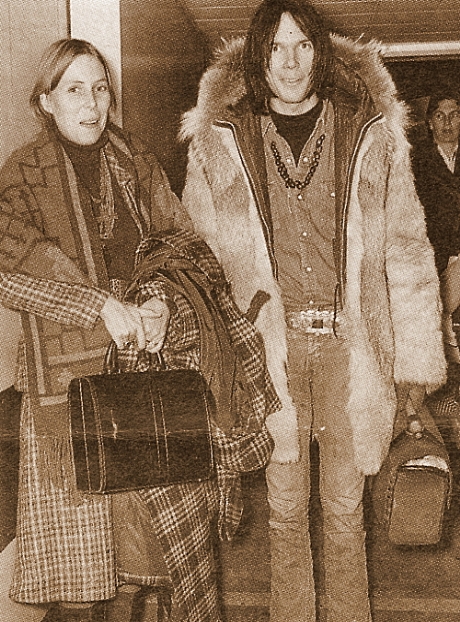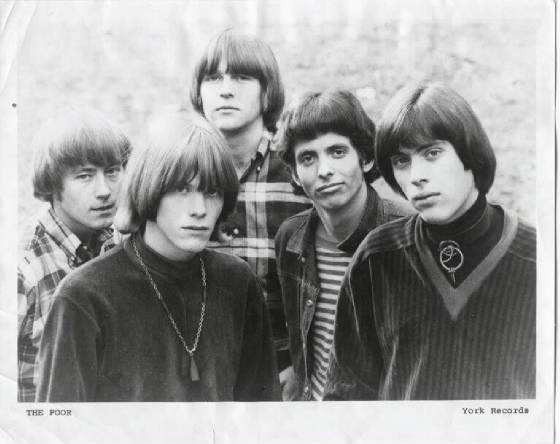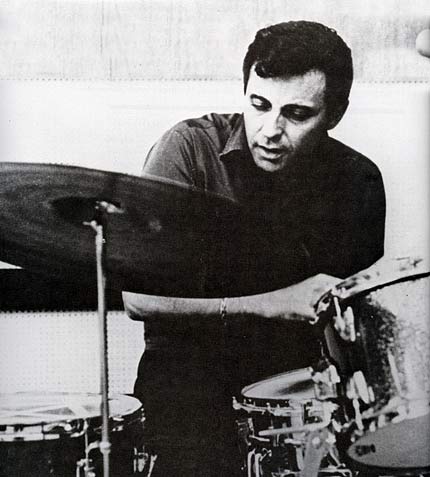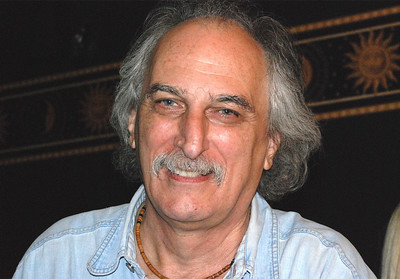By Nick Warburton
In the second of a two-part series profiling US Midwest folk-rock singer/songwriters Brewer & Shipley, Nick Warburton talks to Tom Shipley about his formative years and the recording of the duo’s debut album Down In LA, which has just been released on CD by Cherry Red Records’ subsidiary Now Sounds.
Brewer and Shipley A&M Records Promotional Picture (Tom Shipley left and Mike Brewer right) (used with kind permission of Steve Alexander)Nick Warburton (NW): Tom, I understand that you first met Michael Brewer at the Blind Owl coffeehouse in Kent, Ohio in 1964. Am I right that when he headed for Los Angeles in 1965, you went up to Toronto and played the folk scene in Eastern Canada for quite a while before heading for California around late 1966?
Tom Shipley: Yes, it was a couple of years. [I met Joni Mitchell] back when she was Joni Anderson before she married Chuck Mitchell. I met Neil Young; he wasn’t really a singer on the street but he was singing for pass the hat. I opened for a lot of people at a club called the Purple Onion. There was also the Steel Tavern, a bar down on Yonge Street – that’s where Gordon Lightfoot played. I played there and alternated with him a few times.
Joni Mitchell and Neil Young (this photo was taken at Heathrow Airport, UK, December 1969)At the same time I was travelling through all the folk clubs in the United States. I was going back and forth to Greenwich Village a lot, either from Toronto or from Cleveland. But the folk clubs started to fade and that’s when I had taken out papers to become a landed immigrant [in Canada]. I said, “I’ll find something else to do, I’ve got a degree in geology, or I could go to California and give it one more shot”.
NW: When you arrived in Los Angeles, I gather you worked with Ruthann Friedman, who is best known for penning “Windy” for The Association. How did that happen?
Tom Shipley: It was pretty funny actually because at that particular time Hollywood’s music industry was flush with money. The guys who were writing the cheques and putting the deals together, they didn’t like the music. They didn’t understand The Beatles; they didn’t understand why the kids were going crazy. They were throwing money at everything and of course being Hollywood they figured they could construct things.
Like everyone else I was hawking songs and I’d go round all these different publishers. At one point a guy at A&M Records called Chuck Kaye got me together with Ruthann and said, “You guys ought to try writing together”. They had a song written by the guy who wrote The Association’s first big hit, “Along Comes Mary”. I said “sure” because they were going to pay Ruthann and I regular studio wages to go in and record this song. It was called “Little Girl, Lost and Found” [and released under the name The Garden Club]. We worked on songs together; in fact we’d rehearse and write in David Crosby’s basement when he was living up in the hills.
[tubepress video=BPTFNZJr-7I]
NW: It was also during this time that you started working with Michael?
Tom Shipley: It was really funny because Michael and I had started writing together. I was working on a song [called “Time and Changes”] and Ruthann was working on a song and we were going to get together one evening and help each finish the two songs. Instead, Michael and I got in the middle of writing a song together so I called her and said, “I’m not going to make it tonight”. She finished her song and it was “Windy”. It was a giant hit. In fact I cut the demo with her; I sang harmony on the demo with her.
[tubepress video=Pb6ynAbxLBI]
NW: You nearly had a hit yourself with “Time and Changes”, which was recorded by The Poor.
Tom Shipley: The lead singer was Randy Meisner who ended up being the bass player with The Eagles. They were real good friends of Michael and I. We hung out with The Poor all the time. There was a big ad in Billboard for the song and it goes shooting up the charts and I’m thinking, “Okay, now it’s my turn, I’ve made it” and about that time just when it looked like it was going to peak, the DJs go on strike. It just went right down. Right there I learnt everything I ever needed to know about Hollywood and show business.
The Poor in Los Angeles in 1967: Pat Shannhan, Randy Naylor, Randy Meisner, John Day and Allen Kemp. (Photo from http://home.netcom.com/~mstelk/index.html)NW: Tom – tell me about a song you wrote and demoed around this time called “The Dawn Coming On”.
Tom Shipley: I went in to do the demo and Jesse Colin Young, who I had known from the folk days, was playing bass on it. MCA was ready to offer me a song-writing deal but Michael and I had started writing together. Michael was already signed to A&M and there was no way that we could write together if we were signed to two different publishers. A&M put me on the pay roll. We were writing songs together and then we’d go to open mic nights down at the Troubadour on a Monday and sing our songs.
NW: How come you never released your own versions of “Comes and Goes” and “Sign of the Queen”, which were covered by Glenn Yarbrough and Noel Harrison respectively?
Tom Shipley: Actually we demoed them [“Comes and Goes” and “Sign of the Queen”]. The demos weren’t that hot and to be perfectly honest we were trying to get out of L.A. I was living in a tent in Michael’s back yard that last couple of weeks when we were finishing the album. My rent was running out and I didn’t want to sign up for another lease. We did perform “Sign of the Queen” on the stage quite a bit in the early days. I really liked that song but it was in a lot of modal tunings and was a fairly difficult song to get prepared for.
NW: HP Lovecraft did “Keeper of the Keys”, which I gather was inspired by Tolkien’s “Lord of The Rings”?
Tom Shipley: When I was headed for California the first time, my long voyage, which took me from Toronto out to California through Kansas City where I had a two-week engagement, I read all three of Tolkien’s trilogy, “Lord of the Rings”. Think about the lyrics – “Could we possibly see the keeper of all the keys?” I did a lot of the lyrics on that. I didn’t realise this until later but it was really inspired by what I had just gone through reading the Tolkien trilogy. I was making my own trek across country. I was on my own voyage at the same time.
[tubepress video=oN8QAO6pk7U]
NW: Tom – can you tell me what “Time and Changes” was about?
Tom Shipley: It was about young lust. Actually, it was kinda of inspired by a Troggs song “Wild Thing”. There was something about that song that inspired me to write a song.
NW: Michael said that sessions for Down In LA didn’t start well. What are your recollections?
Tom Shipley: Allen Stanton thought of himself as a producer but he was really an executive producer, so all he knew what to do was to hire the best musicians. That’s why we had guys like Jimmy Gordon and Hal Blaine, Joe Osborn – we had some killer players on that. But when we got in the studio he didn’t know how to produce. Really a producer is supposed to be your filter. Once we got hooked up with Jerry it really started to be fun.
Hal Blaine – legendary session drummerNW: I really like the end song “Mass For M’Lady” – what inspired that?
Tom Shipley: We were writing really obscure esoteric modal tunings. We were trying to get away from all the craziness that was going on. While we were in the middle of writing that song, two old black girls were run over and killed on the street right down the street from where we were. The song was about us. It was a mass. Things had gotten really bad. It’s like a funeral dirge. We were feeling spiritual, that’s what L .A. has finally done to us.
Brewer and Shipley support Laura Nyro at The Troubadour, Concert Poster in the Los Angeles Free Press 30 May 1969 (used with kind permission of Steven Finger, L.A Free Press)NW: The song “Green Bamboo” sounds like being above L.A and getting away from the craziness?
Tom Shipley: We’d finally got a bit of money. Actually, somebody had thumped my car. I had an old 1949 Ford and somebody had run in to and put a pretty good dent on it. It was such a big dent that the car drove but it was totalled. I found a place up in Hollywood Hills where I really wanted to move to in Mount Washington but there was no way that I was going to come up with the money. One day Michael comes over with a letter and it was a cheque for about $300 for the value of the funky car and that’s exactly what I needed. We were sitting up there and there was a lot of Bamboo growing. We had got up above the city. That was a relief for a while.
[tubepress video=elsKZySwZdY]
NW: With the release of Down In LA on CD finally, how do you feel about the album looking back?
Tom Shipley: I think it is a very autobiographical story. Actually, all of our albums have been that way. We were fortunate to have so many great players on Down In LA. And, I believe, there are some really good songs on it. Given the nature of the way and reason we wrote the songs, sometimes when I listen to it I remember the good times and that makes me happy. And sometimes I’m reminded of all the grief a couple of guys from middle-America had dealing with L.A. That makes me sad. In all I’m really proud of the album and thank Jerry, Leon, and Jimmy Messina for turning it from a batch of demos into a real album that told the story of Brewer and Shipley down in L.A.
Tom ShipleyGood luck with everything Tom. I hope you guys finally get the recognition that you deserve with the release of Down In LA on CD. It’s one of my personal favourites. Thanks for speaking to me.
Nick Warburton is a UK-based freelance writer, who has written for Shindig, Record Collector, the Garage Hangover website, Vernon Joynson’s book series and Richard Morton Jack’s Endless Trip.
This interview was carried out in October 2009. A great big thanks goes to Tom Shipley and also Steve Alexander, who provided the photos and runs an excellent site at: www.brewerandshipley.com
I’d also like to thank Steven Finger at the L.A Free Press for the use of the poster: www.lafpmusic.com
Copyright © Tom Shipley and Nick Warburton, 2012. All Rights Reserved. No part of this article may be reproduced without permission from the authors.






